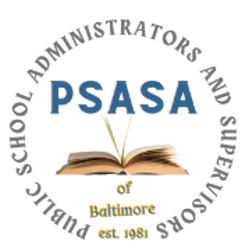The White House released its Improving Student Achievement Agenda for 2024, which is focused on proven strategies that will accelerate academic performance for every child in school. There is nothing more important to our future than ensuring children are equipped to compete in the 21st century. That’s why the administration is laying out an agenda for academic achievement for every school in the country, using all of its tools—including accountability, reporting, grants and technical assistance—to intensify its drive for adoption of three evidence-based strategies that improve student learning: increasing student attendance, providing high-dosage tutoring, and increasing summer learning and extended or after-school learning time.
School closures launched during the previous administration set students back. President Biden’s American Rescue Plan, the largest one-time education investment in our history, helped schools reopen and regain ground faster. From the start, this administration has been laser focused on working with school districts to invest these funds to help students recover from the effects of the pandemic through proven strategies like high-dosage tutoring and expanded summer learning. The Department of Education is using every tool in its toolbox so that states and districts achieve greater adoption of these three proven strategies and accelerate academic progress nationwide. These strategies complement the administration’s continued focus on improving mental health in schools, supporting America’s teachers and other school staff, and strengthening core instruction through the Raise the Bar: Lead the World initiative.
Specifically, the administration is urging states, districts and schools to adopt these strategies to increase effective time on task, based on the evidence.
Increasing attendance: Following the school closures that began in 2020, chronic absenteeism emerged as a serious challenge. Across the country, the rate of chronic absenteeism reached about 31% in 2021–2022 because of COVID-19. We cannot and will not accept that as a new normal. Students who are chronically absent are much less likely to read at grade level and to graduate from high school. According to the Council of Economic Advisers, absenteeism can account for up to 27% and 45% of the test score declines in math and reading, respectively. Low-cost informational interventions, like sending texts to parents about their children’s missed school, can reduce absenteeism by up to 17%. Research also shows that targeted parent and family engagement—such as home visits, the adoption of early warning intervention systems, and the effective use of data and family engagement to identify why a student is absent and what tailored strategy will address the cause—can significantly increase student attendance. Reducing absenteeism can have a major impact on student performance.
Providing high-dosage tutoring: Well-designed and well-implemented tutoring programs can significantly accelerate student learning, including enabling a child to gain as much as 1.5 years of achievement in math. Research shows that to achieve these results, tutoring programs should: (1) provide at least three 30-minute sessions per week; (2) occur in small groups (e.g., 1–4 students); (3) occur during the school day, which helps support consistent participation; (4) use well-trained tutors (e.g., paraprofessionals, teaching candidates, retired teachers, AmeriCorps members, teachers and others); and (5) be aligned with an evidence-based, structured curriculum. School systems across the country, including in Chicago, Baltimore and Greensboro, have leveraged American Rescue Plan funding to scale strategies with promising evidence of positive impact as the Department of Education has long promoted. When implemented well, high-dosage tutoring can reduce burdens on teachers and complement other school-based activities, such as building educator capacity through the use of math and literacy coaches, which research shows can improve student achievement, and professional development to support data-driven instruction.
Increasing summer learning and extended or after-school learning time: One study found that when students consistently participate in high-quality after-school enrichment programs, it adds about four months of student learning to the academic year. Another analysis of 30 schools found that when the school day’s instructional time is extended from 6½ to 8 hours for students in low-income areas, test scores improve between 11% and 24%. Summer programs lasting five weeks with at least three hours of academic instruction per day add about two months of learning in math and one month of learning in reading, according to a meta-analysis. The use of data on student participation and program quality helps these programs succeed, and their success enables teachers to deliver instruction more effectively during the regular school day. Close to half of school districts have invested American Rescue Plan funds in expanded summer learning, which has been shown to improve students’ math scores.
| Strategy | Model State Commitment |
| Reducing Absenteeism | # parents reached with letters, texts or calls to encourage consistent attendance; # home visits and other evidence-based interventions for students |
| High-Dosage Tutoring | # tutors delivering and # and % of students receiving evidence-based tutoring between January and June 2024; # tutors delivering and # and % of students receiving evidence-based tutoring in 2024-2025 school year |
| Summer Learning and Extended or After-School Learning Time | # weeks of evidence-based summer learning and enrichment for # and % of students; # days of extended school day or year for # and % of students; # days of after-school programs for # and % of students |

